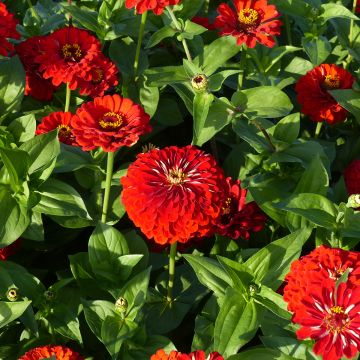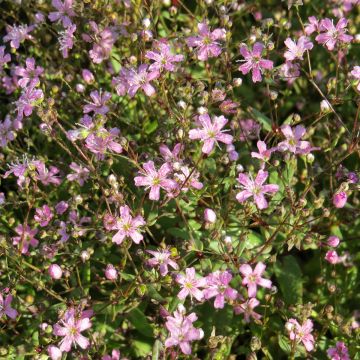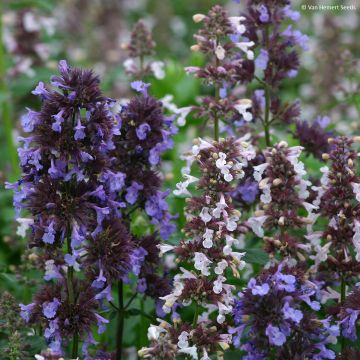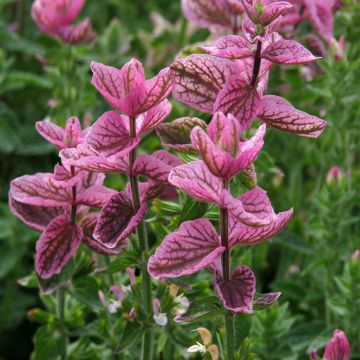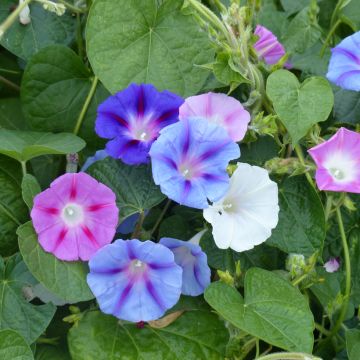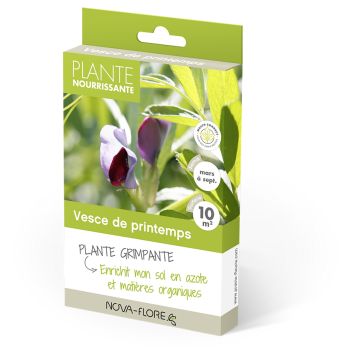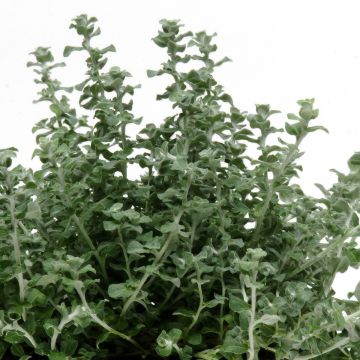

Primula capitata Noverna Deep Blue - Primrose
Primula capitata Noverna Deep Blue - Primrose
Primula capitata Noverna Deep Blue
Round-headed Himalayan Primrose
Good
Josseline, 12/08/2021
Special offer!
Receive a €20 voucher for any order over €90 (excluding delivery costs, credit notes, and plastic-free options)!
1- Add your favorite plants to your cart.
2- Once you have reached €90, confirm your order (you can even choose the delivery date!).
3- As soon as your order is shipped, you will receive an email containing your voucher code, valid for 3 months (90 days).
Your voucher is unique and can only be used once, for any order with a minimum value of €20, excluding delivery costs.
Can be combined with other current offers, non-divisible and non-refundable.
Why not try an alternative variety in stock?
View all →This plant carries a 6 months recovery warranty
More information
We guarantee the quality of our plants for a full growing cycle, and will replace at our expense any plant that fails to recover under normal climatic and planting conditions.
Would this plant suit my garden?
Set up your Plantfit profile →
Description
The Primula capitata 'Noverna Deep Blue' is a lovely selection from the Himalayan primrose, a wonderful montane species that can be a bit delicate to acclimate in our gardens. Its upright flower stems, covered in white powder, bear heads of flowers in a deep blue-violet color that somewhat resemble those of scabious. They bloom from spring to summer, above a rosette of velvety leaves in a grayish green color. A perennial and hardy plant, it appreciates humus-rich soils, climates with humid and cool summers, and non-scorching exposures. Sown from January to March in a heated greenhouse, it will flower in its first year.
The Primula capitata is a relatively unknown plant in the Primulaceae family. It is a herbaceous perennial species native to the eastern Himalayas, which is characterized by a very cool, rainy climate in summer and cold, dry weather in winter. In nature, it can be found on wooded slopes, forest edges, and in open woodlands, growing in rocky and humus-rich soils that are well-drained and slightly acidic. These are the growing conditions that suit it and that the gardener will try to provide in order to succeed in its cultivation.
The cultivar 'Noverna Deep Blue', from which it originates, is mainly distinguished by the color of its flowers, a deep blue-violet. First, velvety rosettes of leaves appear, lying close to the ground and reaching a width of 30 cm (11.8 in), spreading into small colonies if the growing conditions are suitable. The flowering can occur from April to September, even on young plants aged 4 to 6 months. Rosettes of leaves emerge from slightly powdery flower stems, reaching a maximum height of 30 cm (11.8 in). They produce globular inflorescences measuring 4 to 5 cm (2 in) in diameter, composed of multiple small bell-shaped flowers facing slightly downwards. The flowers, measuring 1 to 1.5 cm (0.6 in) in diameter, are more or less powdery, with a blue-violet color around a tiny yellow heart encircled in purple. Pollinated by insects, the flowers produce fine seeds that can germinate in humus-rich and light soil. The foliage is light green with a slightly grayish appearance on the upper side, and it has a powdery texture and a lighter color on the underside. The toothed leaves measure from 5 to 12 cm (4.7 in) in length, and they are velvety and beautifully wrinkled. The vegetation of this primrose, which is more or less deciduous, often disappears in winter and reappears in spring.
The Noverna Deep Blue primrose will delight gardeners who enjoy challenges: if you succeed in growing the mythical blue poppy from the Himalayas, acclimating this small perennial will seem like child's play, as these two plants enjoy the same environments. They are perfect plants for flowering slightly shaded and cool gardens in summer, as long as the soil is not waterlogged in winter! This primrose can be associated with easy perennials such as campanulas, epimediums, thalictrums, and other lungworts, for example. Plant primroses in vigorous groups for a greater impact. This plant can also be used to fill a shaded and cool rockery, with Fortune's saxifrages, for example. It can also be attempted in pot cultivation, which will allow it to be protected from excessive moisture in winter by storing it in an unheated but bright location.
Flowering
Foliage
Plant habit
Botanical data
Primula
capitata
Noverna Deep Blue
Primulaceae
Round-headed Himalayan Primrose
Himalayas
Other Flower seeds A to Z
View all →Planting and care
Sowing:
The Japanese primrose seeds are sown from November to June on the surface of a moist special sowing compost, in trays. Cover them with a thin layer of compost or vermiculite. Enclose your sowings in a transparent plastic bag and keep it at a temperature between 18 and 20 °C. Light promotes germination. Keep the surface of the compost moist but not waterlogged. Germination can take 21 to 30 days and may be irregular. Sow from January to March for flowering in the first year.
Note: the seeds of this primrose do not require cold treatment to germinate.
Transplant the young plants when they are large enough to handle, into 8 cm (3.1 in) pots. Grow them in a cooler environment, regularly watering them without excess. Plant them outdoors, leaving a spacing of 30 cm (11.8 in) between each plant.
Cultivation:
The Himalayan primroses appreciate moist, humus-rich but well-drained soils. They dislike heat and dryness in summer. On the other hand, these montane plants appreciate cold and dry winters, as well as the protection of a layer of snow in winter. Ideally, place the plants in partial shade (morning sun) or in a light and cool woodland for example. The soil should ideally be deep, humus-rich, neutral to slightly acidic, and even peaty. It is also possible to grow these species in pots and containers, in a mix of compost and peat kept consistently moist from spring to autumn, but drier in winter. Place the pot in the East or North, and shelter it from heavy winter rains if they are abundant in your region.
Remove the foliage and faded flower spikes once a year, divide clumps that have become too large. It is recommended to repot potted plants every two years to renew the substrate.
Sowing period
Intended location
Planting & care advice
-
, onOrder confirmed
Reply from on Promesse de fleurs
Similar products
Haven't found what you were looking for?
Hardiness is the lowest winter temperature a plant can endure without suffering serious damage or even dying. However, hardiness is affected by location (a sheltered area, such as a patio), protection (winter cover) and soil type (hardiness is improved by well-drained soil).

Photo Sharing Terms & Conditions
In order to encourage gardeners to interact and share their experiences, Promesse de fleurs offers various media enabling content to be uploaded onto its Site - in particular via the ‘Photo sharing’ module.
The User agrees to refrain from:
- Posting any content that is illegal, prejudicial, insulting, racist, inciteful to hatred, revisionist, contrary to public decency, that infringes on privacy or on the privacy rights of third parties, in particular the publicity rights of persons and goods, intellectual property rights, or the right to privacy.
- Submitting content on behalf of a third party;
- Impersonate the identity of a third party and/or publish any personal information about a third party;
In general, the User undertakes to refrain from any unethical behaviour.
All Content (in particular text, comments, files, images, photos, videos, creative works, etc.), which may be subject to property or intellectual property rights, image or other private rights, shall remain the property of the User, subject to the limited rights granted by the terms of the licence granted by Promesse de fleurs as stated below. Users are at liberty to publish or not to publish such Content on the Site, notably via the ‘Photo Sharing’ facility, and accept that this Content shall be made public and freely accessible, notably on the Internet.
Users further acknowledge, undertake to have ,and guarantee that they hold all necessary rights and permissions to publish such material on the Site, in particular with regard to the legislation in force pertaining to any privacy, property, intellectual property, image, or contractual rights, or rights of any other nature. By publishing such Content on the Site, Users acknowledge accepting full liability as publishers of the Content within the meaning of the law, and grant Promesse de fleurs, free of charge, an inclusive, worldwide licence for the said Content for the entire duration of its publication, including all reproduction, representation, up/downloading, displaying, performing, transmission, and storage rights.
Users also grant permission for their name to be linked to the Content and accept that this link may not always be made available.
By engaging in posting material, Users consent to their Content becoming automatically accessible on the Internet, in particular on other sites and/or blogs and/or web pages of the Promesse de fleurs site, including in particular social pages and the Promesse de fleurs catalogue.
Users may secure the removal of entrusted content free of charge by issuing a simple request via our contact form.
The flowering period indicated on our website applies to countries and regions located in USDA zone 8 (France, the United Kingdom, Ireland, the Netherlands, etc.)
It will vary according to where you live:
- In zones 9 to 10 (Italy, Spain, Greece, etc.), flowering will occur about 2 to 4 weeks earlier.
- In zones 6 to 7 (Germany, Poland, Slovenia, and lower mountainous regions), flowering will be delayed by 2 to 3 weeks.
- In zone 5 (Central Europe, Scandinavia), blooming will be delayed by 3 to 5 weeks.
In temperate climates, pruning of spring-flowering shrubs (forsythia, spireas, etc.) should be done just after flowering.
Pruning of summer-flowering shrubs (Indian Lilac, Perovskia, etc.) can be done in winter or spring.
In cold regions as well as with frost-sensitive plants, avoid pruning too early when severe frosts may still occur.
The planting period indicated on our website applies to countries and regions located in USDA zone 8 (France, United Kingdom, Ireland, Netherlands).
It will vary according to where you live:
- In Mediterranean zones (Marseille, Madrid, Milan, etc.), autumn and winter are the best planting periods.
- In continental zones (Strasbourg, Munich, Vienna, etc.), delay planting by 2 to 3 weeks in spring and bring it forward by 2 to 4 weeks in autumn.
- In mountainous regions (the Alps, Pyrenees, Carpathians, etc.), it is best to plant in late spring (May-June) or late summer (August-September).
The harvesting period indicated on our website applies to countries and regions in USDA zone 8 (France, England, Ireland, the Netherlands).
In colder areas (Scandinavia, Poland, Austria...) fruit and vegetable harvests are likely to be delayed by 3-4 weeks.
In warmer areas (Italy, Spain, Greece, etc.), harvesting will probably take place earlier, depending on weather conditions.
The sowing periods indicated on our website apply to countries and regions within USDA Zone 8 (France, UK, Ireland, Netherlands).
In colder areas (Scandinavia, Poland, Austria...), delay any outdoor sowing by 3-4 weeks, or sow under glass.
In warmer climes (Italy, Spain, Greece, etc.), bring outdoor sowing forward by a few weeks.



































